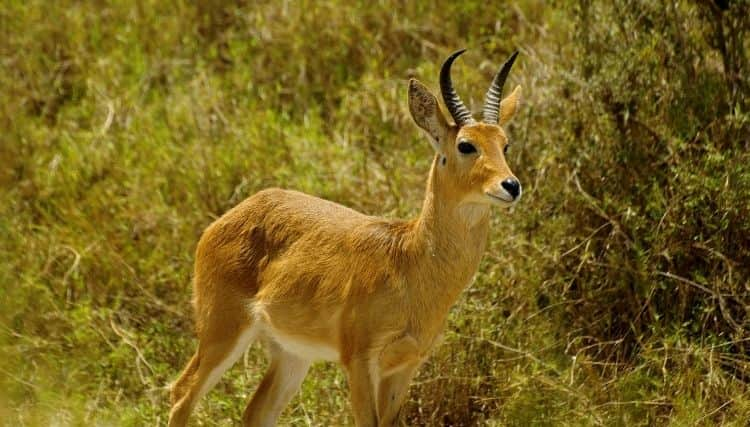
Bohor reedbuck, a medium-sized antelope species found in sub-Saharan Africa, are fascinating creatures that inhabit wetlands and grasslands. Their reddish-brown coat with a white underbelly and short curved horns make them stand out from other antelopes. These herbivores primarily feed on grasses and vegetation found in their habitat.
Living in small groups of up to six individuals, bohor reedbuck are social animals that have been observed in larger herds as well. However, they face threats from predators such as lions, leopards, hyenas, and wild dogs. Although not currently considered endangered, habitat loss and hunting could impact the long-term survival of these antelopes.
Bohor reedbuck can be spotted near water sources such as rivers or swamps where they can find food and protection from predators. Their unique appearance makes them easy to identify even from afar. If you’re lucky enough to spot one of these majestic creatures during your travels through sub-Saharan Africa, take a moment to appreciate their beauty.
It’s important to note that bohor reedbuck play an essential role in maintaining the ecological balance of their habitats. By feeding on vegetation and serving as prey for predators, they contribute to the overall health of the ecosystem.
Physical Characteristics and Diet of Bohor Reedbuck
Distinctive Physical Characteristics of Bohor Reedbuck
Bohor reedbuck, also known as redunca redunca, are medium-sized antelopes that can be found in a variety of habitats throughout sub-Saharan Africa. One of the most distinctive features of this species is their reddish-brown coat with a white underbelly and a black stripe running down its back. This coloration helps them blend into their surroundings and avoid detection by predators.
Bohor reedbuck stand at around 80-100 cm tall at the shoulder, making them slightly smaller than some other antelope species. They have long, pointed ears and curved horns that can reach up to 35 cm in length. These horns are only present in males and are used for territorial displays and fighting during the breeding season.
Dietary Habits of Bohor Reedbuck
As herbivores, bohor reedbuck feed primarily on grasses, leaves, and other vegetation found in their natural habitat. Their unique digestive system allows them to extract as much nutrition as possible from their food, which is necessary for survival in often arid environments.
Bohor reedbuck are well adapted to living near water sources because they require regular access to drinking water for hydration and to help regulate their body temperature. In addition to drinking water, they may also consume aquatic plants or browse trees near rivers or lakes.
Adaptations for Survival
In addition to their unique digestive system and reliance on water sources, bohor reedbuck have several other adaptations that help them survive in the wild. For example, they have excellent eyesight and hearing abilities that allow them to detect predators from far away.
When threatened by predators such as lions or hyenas, bohor reedbuck will use their speed and agility to evade capture. They can run at speeds up to 50 km/hour over short distances but prefer to flee into dense vegetation where they can hide from predators.
Habitat and Distribution of Bohor Reedbuck
Bohor reedbuck are fascinating antelopes that can be found in various habitats across Africa. These animals are known for their distinctive appearance, which includes a light brown coat with white underparts and a short, pointed mane. In this section, we will discuss the habitat and distribution of bohor reedbuck.
Various Habitats
Bohor reedbuck are adaptable animals that can be found in different habitats such as grasslands, woodlands, and riverine areas. Eastern bohor reedbuck is found in eastern and central Africa while western bohor reedbuck is located in West Africa. They prefer to live near water sources such as rivers or streams where they can find food easily.
Small Home Ranges
Bohor reedbuck have relatively small home ranges compared to other antelopes, typically ranging from 10 to 100 hectares. This means they do not roam around too much but rather stay within a specific area. Their small home ranges make them easier to hunt by predators.
Kenya’s Grasslands
In Kenya, bohor reedbuck can be found in grasslands and woodlands near rivers and streams. They are also spotted in other African countries like Niger and Nigeria where the terrain is suitable for their survival. However, habitat loss due to human activities has caused a decline in their population.
Decreasing Range
The range of bohor reedbuck has decreased over time due to habitat loss and hunting. Human activities such as agricultural development have destroyed their natural habitats leading to a decrease in the number of these animals. Hunting has also contributed significantly to the decrease in their population making them vulnerable species.
Behavior and Social Structure of Bohor Reedbuck
Social animals that live in herds
Bohor reedbuck (Redunca redunca) are social animals that live in small herds. These herbivores are found in grasslands, savannas, and wetlands throughout sub-Saharan Africa. They are diurnal animals, which means they are active during the day and rest at night.
Herds of bohor reedbuck are usually small, consisting of 2 to 6 individuals. These groups typically include a dominant male and several females. The males will compete for dominance during the breeding season, which occurs from November to March.
The social structure of bohor reedbuck herds is important for their survival. Living in groups helps them to defend against predators such as lions, hyenas, and leopards. They also use their large ears and keen senses to detect danger and warn each other with alarm calls.
Territorial herds
Bohor reedbuck herds are territorial and will defend their area against other herds. Their home range can vary depending on food availability and breeding opportunities but typically ranges from 40-100 hectares. Within their territory, they establish well-defined paths or trails that they use regularly.
During the breeding season, males compete for dominance by displaying aggressive behavior such as ritualized head-to-head combat or chasing each other around the herd’s territory. The dominant male will mate with most of the females within his herd.
Interestingly enough, bohor reedbuck have been observed forming mixed-species groups with other antelopes such as impalas or dik-diks during times when resources are scarce.
Reproduction and Life Cycle of Bohor Reedbuck
Breeding Season and Reproduction of Bohor Reedbuck
Breeding season is an important time for the bohor reedbuck, a species of antelope that belongs to the genus Redunca. The southern reedbuck shares similar reproductive characteristics with other members of the genus. In this section, we will discuss the breeding season and reproduction of bohor reedbucks in detail.
Breeding Season
The breeding season for bohor reedbuck occurs between January and May when males use their urine to mark their territories and attract females. Males are territorial animals that defend their territory against other males during the breeding season. They use their urine to mark out territories, which they then defend against other males who try to encroach on them.
Reproduction
Copulation usually lasts for a few seconds, after which females give birth to a single offspring after a gestation period of around six and a half months. Female bohor reedbucks are responsible for raising their young ones as male bohor reedbucks do not play an active role in raising their offspring. The young ones are weaned after 4-5 months.
Bohor Reedbuck Life Cycle
The life cycle of the bohor reedbuck begins with mating during the breeding season. After copulation, female bohor reedbucks carry their young ones for about six and a half months before giving birth to them. The newborns weigh approximately 3-6 kg at birth and can stand within minutes after being born.
After giving birth, female bohor reedbucks nurse their young ones until they are weaned at around 4-5 months old. At this point, they can start grazing on vegetation like adult antelopes but still rely on milk from their mothers.
As young bucks grow older, they leave their mother’s group and join bachelor herds or become solitary until they reach sexual maturity at around 2-3 years old. Male bohor reedbucks are territorial and will mark out their territories during the breeding season to attract females.
Threats to the Survival of Bohor Reedbuck
Rainy Season Threats
During the rainy season, bohor reedbuck face significant threats due to flooding and loss of habitat. The floods caused by heavy rains can lead to the displacement of these animals from their natural habitats, making them vulnerable to predators and other dangers. The bohor reedbuck is a herbivorous animal that feeds on grasses and other vegetation found in wetlands. With the flooding of these areas, they are forced to move out in search of food, which exposes them to more significant risks.
Dry Season Threats
During the dry season, bohor reedbuck face threats due to limited water sources and increased competition with other animals. As water sources dry up, they have to travel further distances in search of water, which makes them easy prey for predators such as lions or hyenas. During this period, there is an increase in competition for resources among different animal species that depend on the same water sources.
Fights Between Male Bohor Reedbuck
During mating seasons, male bohor reedbuck engage in fights over females. These fights can lead to injuries or even death if one animal gains dominance over another. Such incidents can reduce population numbers significantly and threaten their survival.
Human Activities
Human activities such as hunting and habitat destruction pose a significant threat to the survival of bohor reedbuck. In some regions where these animals live, they are hunted for bushmeat or sport despite being protected by law. Habitat destruction through human activities like agriculture or urbanization also reduces available land for these animals and contributes significantly to their population decline.
Fragmentation of Habitat
The fragmentation of habitat due to human activities can lead to the isolation of populations reducing genetic diversity and increasing vulnerability to disease. Isolated populations cannot interact with each other hence reducing gene flow and causing a decrease in genetic diversity within populations leading to extinction.
Climate Change
Climate change may also impact the survival of bohor reedbuck by altering their habitat and food sources. Changes in precipitation patterns, temperature, and weather events can lead to changes in vegetation growth, affecting food availability for these animals. As a result, they may be forced to move out of their natural habitats or face starvation.
Conservation Efforts for Bohor Reedbuck
Natural habitats of Bohor reedbucks are under threat due to human activities such as deforestation and grazing. However, various countries have implemented conservation efforts to protect these antelopes and their habitats from further degradation. Let’s take a closer look at some of the conservation efforts for Bohor Reedbucks.
Protecting Natural Habitats
Conservation efforts aim to protect the natural habitats of Bohor reedbucks from further degradation. In Uganda, for instance, the government has established protected areas such as Semuliki National Park and Murchison Falls National Park where bohor reedbucks can thrive without disturbance. Tanzania also has several protected areas such as Selous Game Reserve and Ruaha National Park that provide safe havens for these antelopes.
Forming Groups
Bohor reedbucks usually form groups consisting of females, their offspring, and a dominant male. This social behavior helps ensure the survival of the species since it increases their chances of finding food and avoiding predators. Conservationists have taken advantage of this behavior by creating breeding programs that encourage bohor reedbuck populations to grow in protected areas.
Protecting Calves
Conservation efforts also focus on protecting bohor reedbuck calves from predators such as hyenas and leopards. By doing so, conservationists hope to maintain healthy populations of these antelopes in various countries. One example is in Ethiopia where the Bale Mountains National Park has implemented measures such as predator control programs to reduce calf mortality rates.
Hunting Regulations and Guidelines for Bohor Reedbuck
Identification of Bohor Reedbuck
With its reddish-brown coat and white markings on the head and tail, the Bohor Reedbuck is a unique antelope species that can be found in various African countries. The scientific name for this species is Redunca Redunca, and it is identified by its straight horns that curve slightly backward. These antelopes can range from Senegal to Ethiopia and south to Angola and Zambia.
Hunting Regulations in Burkina Faso
In Burkina Faso, where the Bohor Reedbuck is found, hunting regulations have been put in place to ensure the conservation of this species. The government has set up guidelines for hunting these animals to prevent overhunting or poaching. Hunting permits are required, and only licensed hunters are allowed to hunt Bohor Reedbucks.
These regulations have helped maintain healthy populations of Bohor Reedbucks in Burkina Faso. However, it’s essential to note that these regulations may differ from country to country where this species exists.
Bohor Reedbucks’ Habitat
The habitat of the Bohor Reedbuck includes savannas, grasslands, and wetlands near rivers or lakes. They prefer areas with tall grasses that provide cover for them while grazing. These antelopes are also known for their ability to adapt quickly to changes in their environment.
Tips and Techniques for Hunting Bohor Reedbuck
Scout the Hunting Area Beforehand
Before setting out to hunt bohor reedbuck, it’s essential to scout the hunting area beforehand. Bohor reedbuck prefer habitats with tall grass and reeds near water sources. They are also known to feed on grasses and aquatic plants. By identifying their preferred feeding grounds, you can increase your chances of spotting one during your hunt.
Use a High-Powered Rifle
Using a high-powered rifle is crucial. This type of rifle will provide you with enough power and accuracy to make a clean kill. A flat-shooting cartridge is also recommended as it ensures that the bullet travels in a straight line over long distances.
Approach Slowly and Quietly
Bohor reedbuck are known for their elusive nature, so approaching them slowly and quietly is essential. Take advantage of natural cover and terrain by moving stealthily through the grass or crouching behind bushes. You should also avoid sudden movements or loud noises that could startle the animal.
Aim for Vital Organs
When aiming a bohor reedbuck, be sure to aim for vital organs such as the heart and lungs. This will ensure a quick and humane kill while minimizing suffering for the animal. It’s important to take your time when aiming to ensure that you hit your target accurately.
Be Patient and Persistent
Hunting bohor reedbuck requires patience and persistence as they can be difficult to find due to their elusive nature. Don’t give up too quickly if you don’t spot one right away; instead, keep searching until you find one in its natural habitat or feeding ground.
The Importance of Preserving the Species
Maintaining healthy populations of species is crucial for sustaining ecological balance, and Bohor reedbuck is no exception. Despite being listed as “Least Concern” by the International Union for Conservation of Nature (IUCN), the subspecies of this antelope are facing threats due to habitat loss and hunting. Here’s why preserving Bohor reedbuck is essential:
Preservation of Habitat
Bohor reedbuck plays an important role in maintaining vegetation through their feeding habits. They feed on grasses, which helps maintain a balanced ecosystem. The loss of these animals can have a ripple effect on other animal species in the region, as well as on the vegetation and overall ecosystem.
Territories
During the breeding season, males establish territories that can cover hundreds of hectares marked by boundary displays. These territories are important for maintaining healthy populations and genetic diversity. Protecting these areas is crucial for ensuring successful breeding and survival.
Female bohor reedbuck also establish territories, which overlap with those of males. These areas are vital for ensuring successful breeding and survival of individuals.
Threats to Populations
Habitat loss due to human activities such as agriculture, logging, mining, and urbanization has led to a decline in Bohor reedbuck populations in some regions. Hunting is another significant threat to these animals’ survival.
Conservation Efforts
To preserve Bohor reedbuck populations effectively, conservation efforts should focus on protecting their habitats from human activities such as logging or mining. This involves working with local communities to raise awareness about the importance of preserving natural resources.
Efforts should also be made to regulate hunting activities that target these animals illegally. This can include implementing stricter laws against poaching or providing alternative livelihoods for people who rely on hunting for their income.
Bohor reedbuck size
Medium-sized Antelope: Bohor Reedbuck
Size plays a significant role in the animal kingdom, and it determines how an animal interacts with its environment. The bohor reedbuck is one of the many antelopes that have adapted to their habitat by evolving specific characteristics, including their size. In this section, we will discuss the size of bohor reedbucks and how it affects their survival.
Bohor Reedbuck Weight
The average weight of a bohor reedbuck ranges from 110 lb for males to around 90 lb for females. However, they can weigh up to 150 lb, depending on factors such as age, gender, and feeding habits. Male bohor reedbucks are generally larger than females due to sexual dimorphism. Their larger size helps them establish dominance during mating seasons and protects them from predators.
Shoulder Height
The shoulder height of a bohor reedbuck ranges from 75 to 90 cm, making them relatively small compared to other antelopes. This feature has helped them adapt to their habitat by enabling them to move through dense vegetation easily. They have also developed strong legs that allow them to jump high and sprint fast when threatened by predators.
Agility and Speed
Despite their smaller size compared to other antelopes, bohor reedbucks are known for their agility and speed. Their ability to jump high enables them to escape predators such as lions and hyenas in their natural habitat. They can also run at speeds of up to 45 km/h (28 mph), which makes it difficult for predators to catch up with them.
Bohor meaning
Distinctive Appearance of Bohor Reedbucks
Bohor reedbuck is a type of antelope that belongs to the Redunca genus. These animals are primarily found in sub-Saharan Africa and are known for their ability to adapt to various habitats, including grasslands, savannas, and wetlands. The word “bohor” is derived from the Arabic word “bahur,” which means sea monster or big fish. However, bohors have nothing to do with the sea or fish; they are land animals that inhabit the African continent.
One of the most distinctive features of bohor reedbucks is their appearance. They have a reddish-brown coat with a white underbelly and spiral-shaped horns that can grow up to 25 inches long. Their coat coloration helps them blend in with their surroundings, making it easier for them to evade predators such as lions and hyenas. They are also relatively small in size compared to other antelopes, weighing between 50-90 pounds.
The adaptability of Bohor Reedbucks
Bohor reedbucks are well-adapted to living in various habitats within sub-Saharan Africa. They can be found in grasslands, savannas, wetlands, or near rivers and lakeshores where they feed on aquatic plants such as reeds and sedges. Their diet mainly consists of vegetation but they also occasionally eat insects when vegetation is scarce.
The adaptability of bohor reedbucks extends beyond their habitat preferences; they are also able to adjust their behavior based on environmental conditions. For example, during the rainy season when water sources are abundant, bohors tend to be more solitary creatures as food sources become more plentiful. However, during the dry season when food sources become scarce due to lack of rainfall, they will gather together in larger groups near water sources where there is still some vegetation available.
Conservation Efforts for Bohor Reedbucks
Bohor reedbucks are not currently considered an endangered species, but their populations are declining due to habitat loss and hunting. They are often hunted for their meat and hides, which are used for clothing and other products. The construction of dams and irrigation systems has led to the destruction of wetland habitats where bohors thrive.
Conservation efforts have been put in place to protect bohor reedbucks and their habitats. Some countries have established protected areas where hunting is prohibited, and efforts have been made to restore damaged wetlands. However, more needs to be done to ensure the survival of these unique animals in the wild.
Bohor Reedbuck for sale
Legal Hunting and Sale of Bohor Reedbuck
Bohor reedbuck, also known as redunca bohor, is a species of antelope native to sub-Saharan Africa. While these animals are protected in some countries, they can be legally hunted in others. The hunting season for bohor reedbuck varies depending on the country and location.
Hunting outfitters offer guided trips for hunters seeking to bag a bohor reedbuck. The price of such hunts can range from a few thousand dollars to tens of thousands of dollars, depending on the location and outfitter. Hunters should research their options carefully before choosing an outfitter to ensure that they are working with a reputable company that operates ethically and sustainably.
Game farms and breeders also offer bohor reedbuck for sale. These animals may be sold as breeding stock or as trophies for hunters who prefer not to hunt them in the wild. Prices for captive-bred bohor reedbuck can also vary widely, ranging from several thousand dollars to tens of thousands of dollars.
Ethical Considerations
While it is legal to hunt or purchase bohor reedbuck in some African countries, it is important to consider the ethical implications of doing so. Some conservationists argue that hunting endangered or threatened species undermines efforts to protect them in the wild. Others argue that well-regulated hunting programs can benefit conservation efforts by providing funding for habitat protection and anti-poaching measures.
Regardless of one’s stance on hunting, it is important to ensure that any bohor reedbuck purchased or hunted is done so ethically and sustainably. This means working with reputable outfitters or breeders who prioritize animal welfare and sustainable practices.
Ecology and Behavior: How Do Bohor Reedbucks Behave in the Wild?
Solitary Creatures: Bohor Reedbucks’ Behavior in the Wild
Reedbucks are fascinating creatures that inhabit wetland habitats across sub-Saharan Africa. These medium-sized antelopes are known for their unique behavior, which sets them apart from other herbivores in the wild. In this section, we will delve deeper into the behavior of bohor reedbucks and understand how they navigate through their surroundings.
Solitary Lifestyle
Unlike many other herbivores, bohor reedbucks are solitary creatures that prefer to keep to themselves. Males and females only come together during the mating season, after which they go back to living alone. This behavior is thought to be an adaptation to their wetland habitat, where resources are often scarce. By avoiding competition with other members of their species, reedbucks can maximize their chances of survival.
Active During Specific Times
Bohor reedbucks are primarily active during the early morning and late afternoon when temperatures are cooler. During the hottest parts of the day, they rest in shaded areas to conserve energy. This behavior is essential for survival as it helps them avoid overheating and dehydration in hot climates.
Herbivorous Diet
Reedbucks have a herbivorous diet consisting mainly of grasses and other vegetation found in wetlands. Their long necks allow them to reach tall grasses while standing on their hind legs, making them well-adapted to grazing on tough vegetation. They also have specialized teeth that help them break down tough plant fibers efficiently.
Agile Bodies
Reedbuck’s bodies are designed for agility; they have long slender legs that enable them to move quickly through dense vegetation and escape predators such as lions and hyenas. Their keen senses also play a vital role in helping them detect potential threats early on so that they can flee before being caught.
Conclusion: The Significance of Studying Bohor Reedbuck
Studying bohor reedbuck is significant for several reasons. Firstly, it helps us understand the ecological and behavioral aspects of this unique species. By observing their social structure, diet, and habitat preferences, we can gain insights into their role in the ecosystem and how they interact with other wildlife.
Secondly, studying bohor reedbuck is crucial for conservation efforts. As human activities continue to encroach on their natural habitats, it’s essential to monitor their populations and take measures to protect them from extinction. By understanding their reproductive cycle and life cycle stages, conservationists can develop strategies to ensure the survival of these beautiful animals.
Thirdly, learning about hunting regulations and guidelines for bohor reedbuck can help prevent overhunting or poaching. It’s important to understand the legal framework surrounding hunting practices so that we can enjoy this activity without harming the species’ survival.
Finally, studying bohor reedbuck is a fascinating endeavor that offers valuable insights into one of nature’s most intriguing creatures. From its physical characteristics to its behavior in the wild, there is always something new to learn about these magnificent animals.
- Referans: Observations on a population of Bohor Reedbuck, Redunca reduce (Pallas 1767)
- Diet composition and preferences of Bohor Reedbuck
Is a reedbuck a predator or prey?
A reedbuck is a prey animal. A predator is an animal that hunts and kills other animals for food.
Do female reedbuck have horns?
The female reedbuck does not have horns.
How do you measure a common reedbuck?
The minimum Safari Club International score for a Common Reedbuck is 21. This is measured by adding the length of each horn, as well as the circumference of the bases. If you are not familiar with this process, be sure to review how to measure animals.
Is reedbuck endangered?
They are considered to be endangered because their population has declined by about 50% over the past three decades due to poaching for meat, habitat loss, and hunting for trophies.
What is the scientific name for bohor reedbuck?
The scientific name for bohor reedbuck is Redunca redunca. They are a common species of antelope found in East Africa. They are also known as the black-fronted duiker or Red-flanked duiker.
Where Do Bohor Reedbuck Antelope Sleep?
The males of the species sleep in trees during the day, while females and calves sleep on the ground under trees or bushes at night.
Can Bohor Reedbuck Antelope Swim?
The Bohor Reedbuck Antelope is not a good swimmer. They cannot swim for long periods or in deep water.
İs Bohor Reedbuck Antelope Aggressive?
It is said that this animal can be dangerous when provoked, but most of the time they are not aggressive.
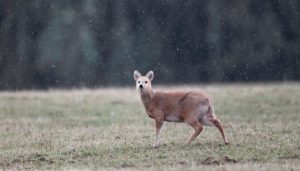
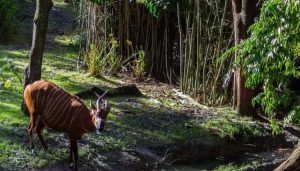
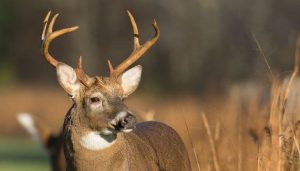
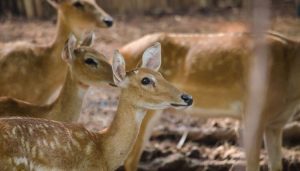
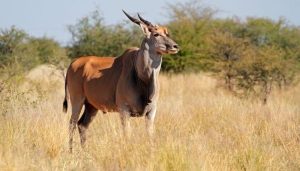
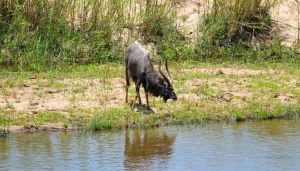
Leave a Reply